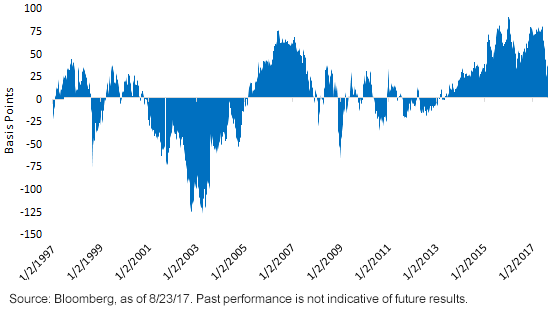
By Kevin Flanagan, WisdomTree Investments
Special to the Financial Independence Hub
With the calendar turning to September on Friday, we’re all sitting back and lamenting the end of another summer. Well, for fixed-income investors, any possible summer doldrums could quickly change, as a number of potentially headline-making events are looming directly ahead, specifically on the central bank front. While the markets do not appear to be anticipating any surprises, the next few weeks look to be busy.
 For the G5 developed market world, the Bank of Canada (BOC) is set to kick things off next week with its formal policy meeting, slated for September 6. After hiking the overnight lending rate by 25 basis points (bps) in July (the first rate hike since 2010), expectations as of this writing are not looking for a follow-up move.
For the G5 developed market world, the Bank of Canada (BOC) is set to kick things off next week with its formal policy meeting, slated for September 6. After hiking the overnight lending rate by 25 basis points (bps) in July (the first rate hike since 2010), expectations as of this writing are not looking for a follow-up move.
Bank of Canada unlikely to move on Sept. 6
Indeed, the implied probability for a rate hike next week is at only 21.7%. It is interesting to note that an integral reason behind the July increase was the BOC’s belief that it needs to focus on future price pressures and not be complacent even though inflation readings, up to that time, had been on the soft side. Thus, when the July year-over-year inflation gauge jumped .2 percentage points to +1.2%, the policymakers may have felt some vindication. Looking ahead into the fourth quarter, the probability of a rate hike for the October policy meeting jumps to 69%.
The European Central Bank meets the following day, September 7, while the Bank of England and Bank of Japan are on the docket for September 14 and 21, respectively. That leaves the Federal Reserve (Fed) on September 20. As of this writing, market expectations not only don’t see the Fed raising rates at its next meeting, but the outlook is for no hikes at all for the rest of 2017. Continue Reading…






